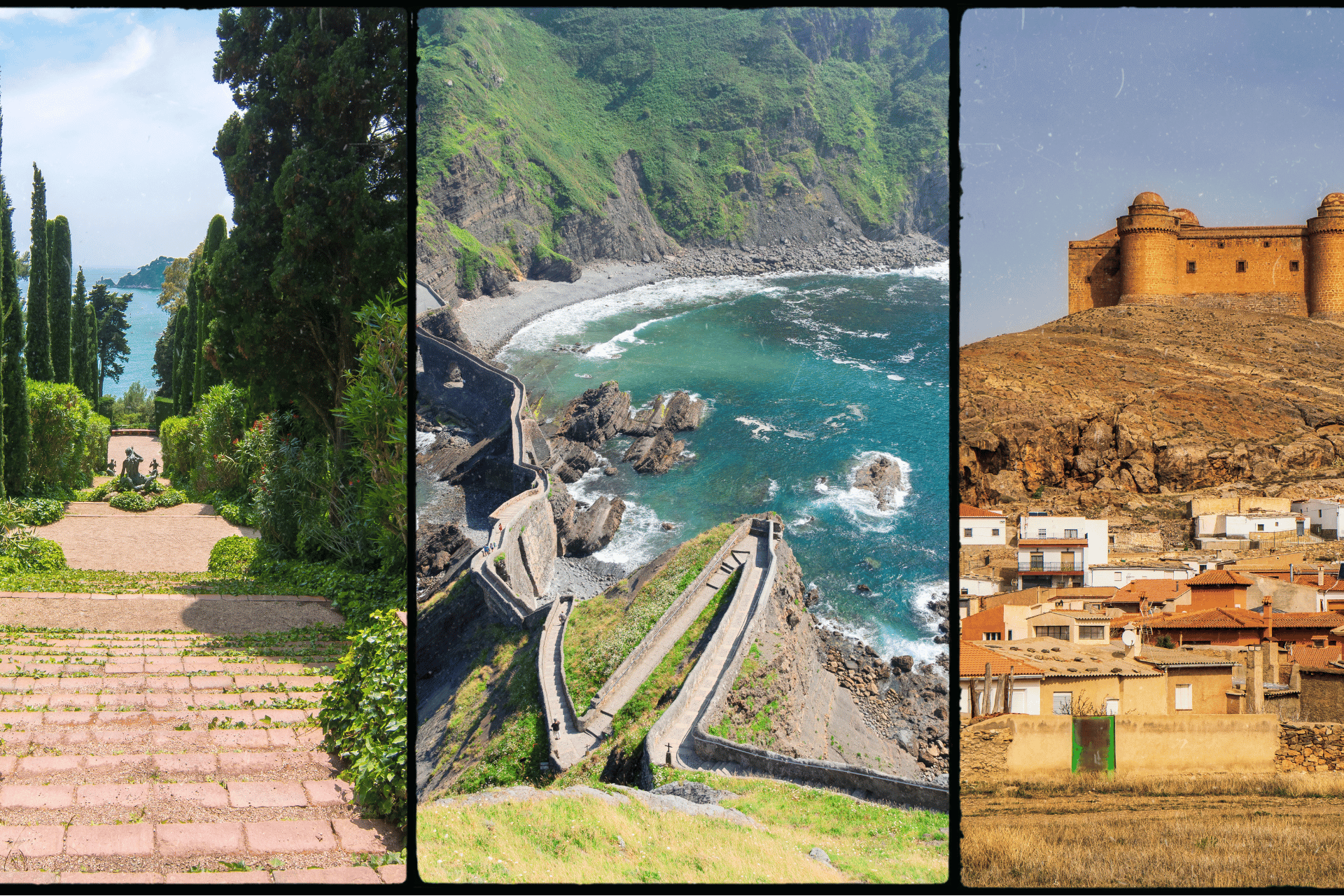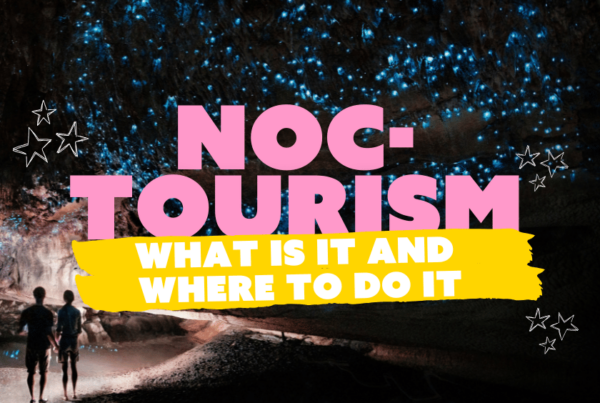House of the Dragon, the prequel to Game of Thrones, is back on our screens this weekend. Like its predecessor, it was also filmed in some incredible locations that you can all visit in real life, so to save you time searching, we’ve rounded up some of the most iconic House of the Dragon filming locations, from picturesque towns in Spain to a village built around giant boulders in Portugal.
Cáceres, Spain
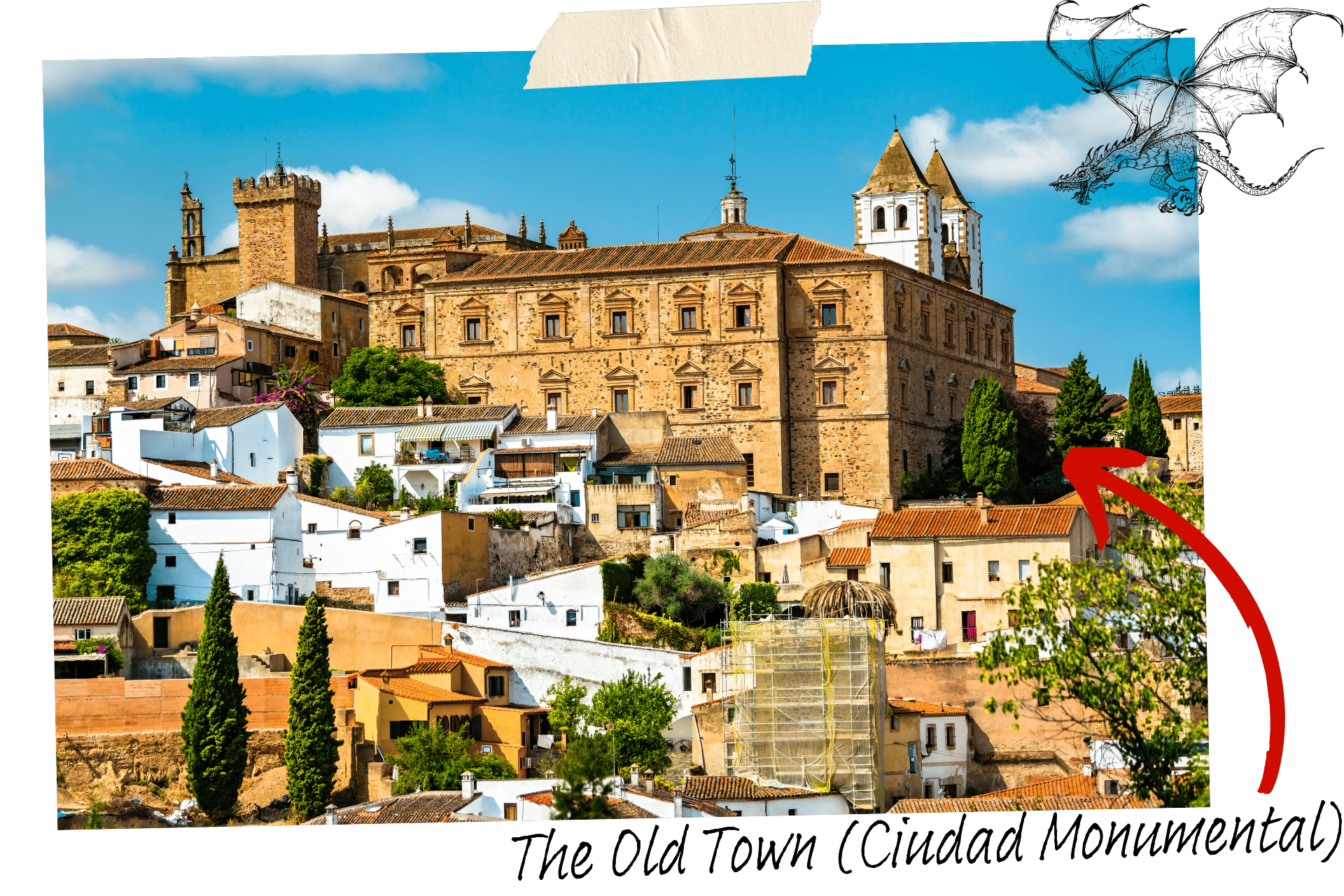
You know this place, you just don’t realise you know it. Whilst the name might not be familiar, its streets most definitely will be – this old, old town in the west of Spain and not that far from the border with Portugal has been seen on screen more times than you realise. It’s big claim to fame though was when Game of Thrones rolled into town to use it as stand-in for King’s Landing in the show’s later seasons, alongside the more well-known filming location of Dubrovnik, over in Croatia.
It stood in for King’s Landing once again as one of the House of the Dragon filming locations. It’s pretty easy to see why they chose it as the fictional capital of Westeros. It’s ancient looking – there’s barely a trace of the 21st century to be seen in its historic centre. Think lots and lots of narrow, winding streets, and Gothic and Renaissance buildings, towers, palaces and walls – all of which haven’t changed for centuries. Prominent landmarks include the Santa María Cathedral, the Bujaco Tower, and the Cáceres Museum, which houses artefacts that tell the story of the city’s past from prehistoric times through to its Roman and Moorish periods. Basically, filming here made their work easy – all they really had to was add in a couple of CGI dragons.
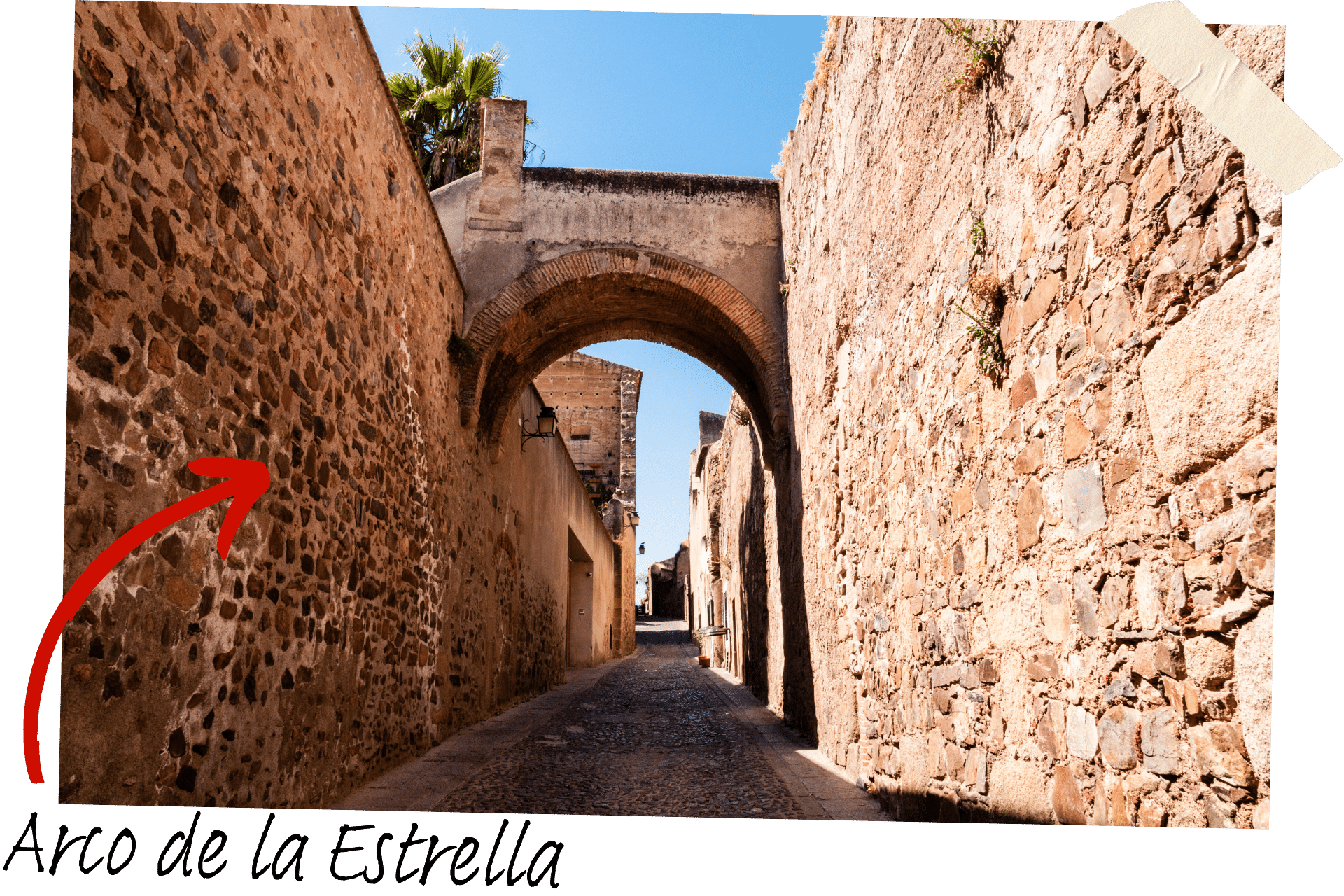 As well as King’s Landing, Cáceres also stepped up to take on the role of Flea Bottom in Season 1 (where Daemon and Rhaenyra have a late night excursion) and again later on in Season 1 when the Greens are searching for Prince Aegon. The small Plaza de San Jorge is where the big fight outside the Sept was filmed, whilst the building that overlooks the square, the Iglesia de San Francisco Javier, stood in for the Sept itself. The Iglesia de San Francisco Javier is actually where you’ll find a small sculpture of Saint George slaying the dragon in a niche.
As well as King’s Landing, Cáceres also stepped up to take on the role of Flea Bottom in Season 1 (where Daemon and Rhaenyra have a late night excursion) and again later on in Season 1 when the Greens are searching for Prince Aegon. The small Plaza de San Jorge is where the big fight outside the Sept was filmed, whilst the building that overlooks the square, the Iglesia de San Francisco Javier, stood in for the Sept itself. The Iglesia de San Francisco Javier is actually where you’ll find a small sculpture of Saint George slaying the dragon in a niche.
House of the Dragon has become such a big thing here, they now hold an annual event called City of Dragons, with sword fighting classes, medieval jousts, concerts, cosplay contests, themed dinners, parades, and even escape rooms. And if you want to tick off every single one of the House of the Dragon filming locations in Cáceres, then there’s a number of tours specially geared towards it now, which’ll even take you beyond the city centre walls.
Catalonia, Spain
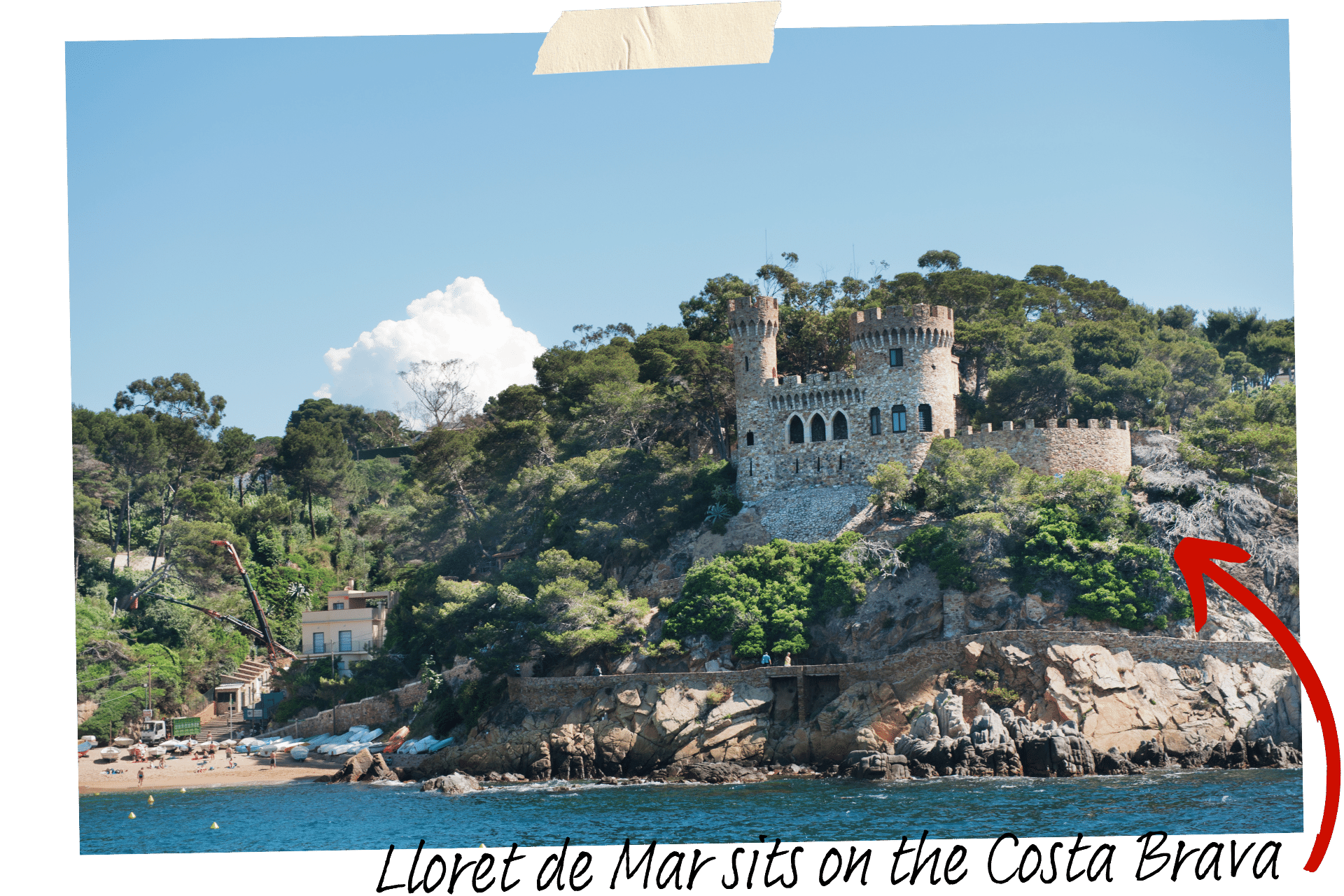
Catalonia, in northeastern Spain and bordered by France and Andorra to the north, the Mediterranean Sea to the east, and the regions of Aragon and Valencia to the west and south, boasts a diverse landscape that includes the Pyrenees mountains and the scenic Costa Brava coastline. It’s best known part is its capital, Barcelona, but the region as a whole enjoys a unique cultural blend, all reflected in its traditions, festivals, and the use of the Catalan language, co-official with Spanish and an essential part of its cultural identity.
But one of the House of the Dragon filming locations can actually be found in a quaint seaside town here – Lloret de Mar. The gardens of Santa Clotide in Lloret de Mar, specifically. This beautiful botanical garden stood in, without much real work on its part, as the gardens of the Red Keep. Designed on the request of the marquis of Roviralta in 1919, the result is a stunning garden that wraps around a central staircase, known as “the stairs of the mermaid”, over a cliff displaying a postcard-perfect view of the Mediterranean Sea.
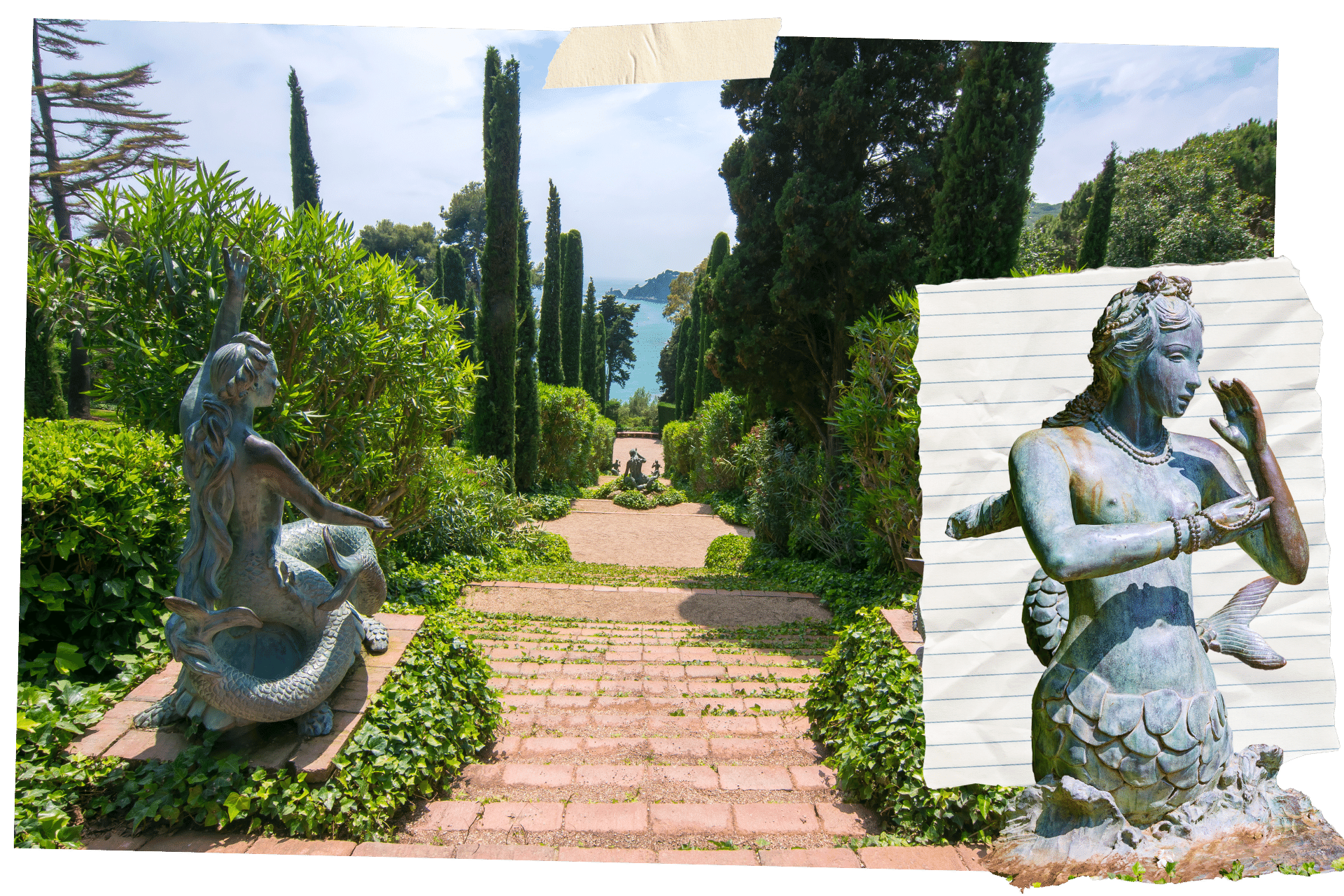 This is the spot where, in Season 1, King Viserys meets his cousin Princess Rhaenys and her husband Corlys Velaryon to discuss his potential marriage to their daughter, Laena Velaryon.
This is the spot where, in Season 1, King Viserys meets his cousin Princess Rhaenys and her husband Corlys Velaryon to discuss his potential marriage to their daughter, Laena Velaryon.
During July and August, the Santa Clotilde Gardens actually now become the ‘Gardens of the Dragon’, with guided tours in Spanish and Catalan every Friday during the month of July, and in English at 7pm on Fridays during August, that’ll take you around the garden to explain its role as one of viewers’ favourite House of the Dragon filming locations.
Gazlelugatxeko, Spain
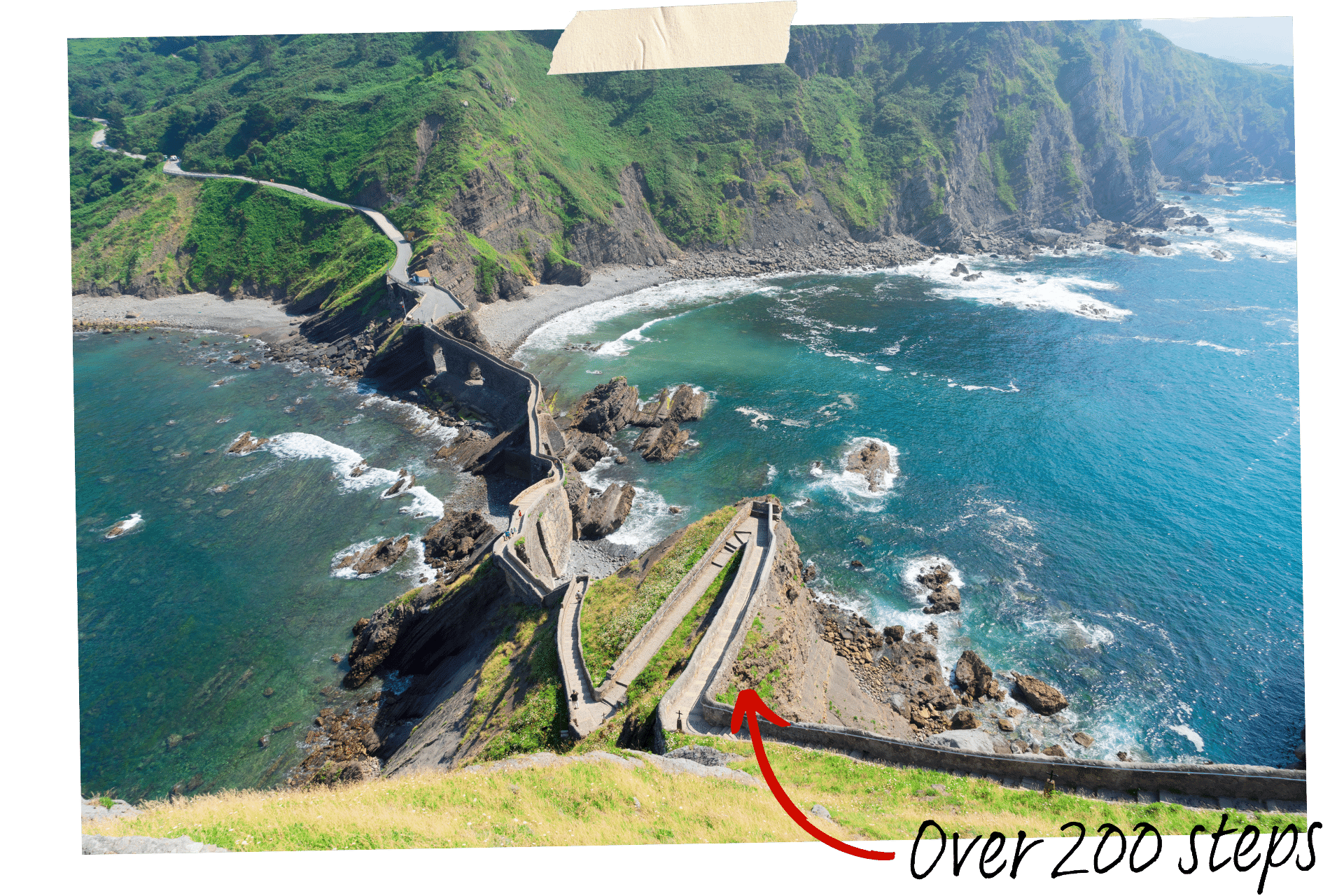
Gaztelugatxe (pronounced, roughly, gatcha-loo-chay), found on the Bay of Biscay in the Basque Country of northern Spain, is a striking little islet connected to the mainland by a narrow, winding stone bridge. For House of the Dragon fans, this will be immediately familiar. Topped by a small hermitage dedicated to St. John the Baptist and known as Juan de Gaztelugatxe, this site is known for its seriously dramatic landscape – think: steep cliffs, rugged terrain, and breath-taking ocean views.
With a timeline that dates back to the 10th century, the current structure has been rebuilt several times due to damage from various conflicts and natural disasters – well, that’s history for you. But let’s get back to that winding stone pathway – this is the bit you’ll recognise from the show immediately (and Game of Thrones too, as it was first featured there) as it stands in for Dragonstone, the the ancestral home of the Mother of Dragons, AKA Daenerys Targaryen.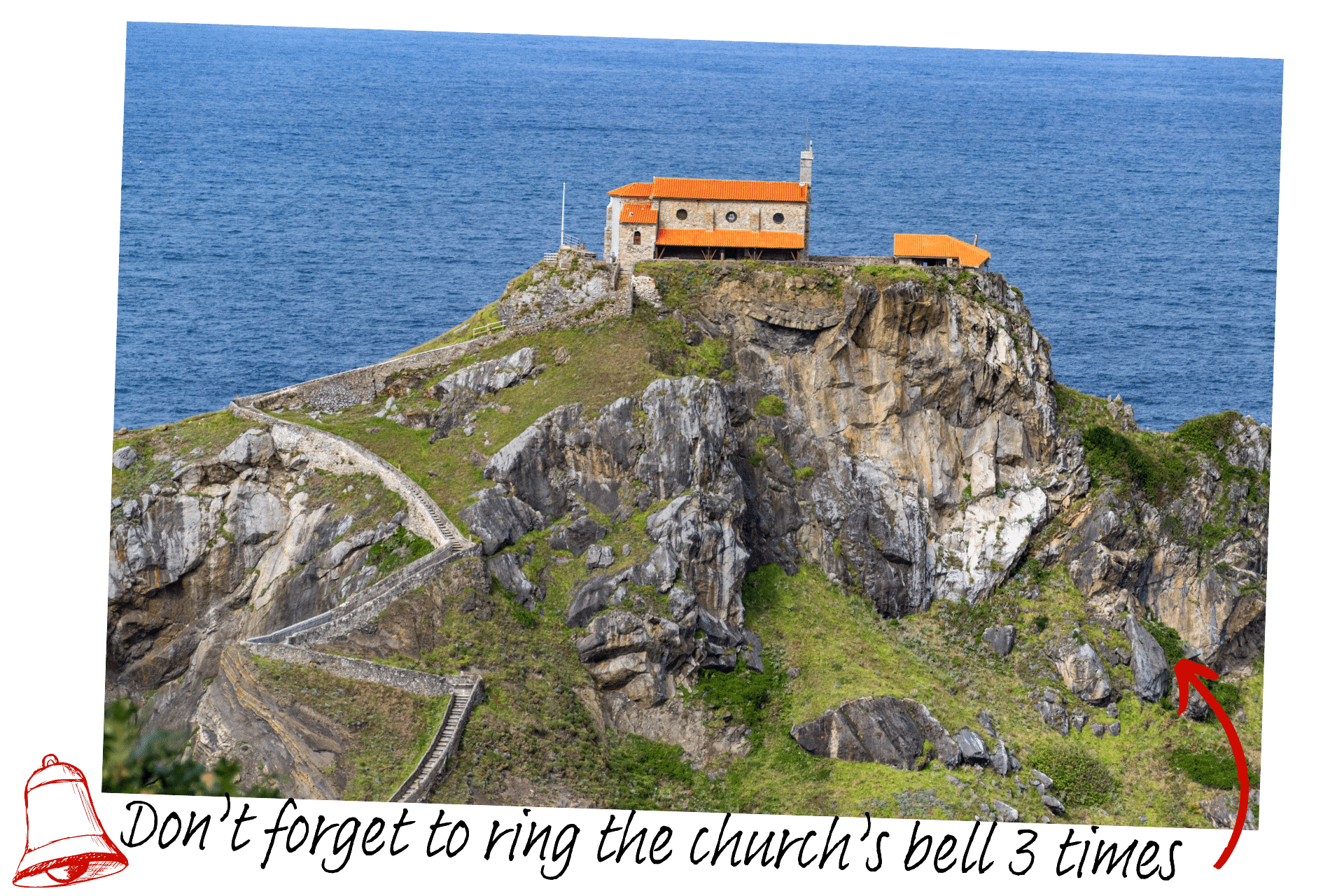
This winding pathway consists of over 200 steps and takes you right up to the hermitage – this hike may be picturesque but it’s also said to be a physical and spiritual journey, with local tradition suggesting that ringing the hermitage’s bell three times and making a wish will bring good luck. Whilst the real church here was painted over with CGI in the show, it’s still worth visiting in its own right.
Trujillo, Spain
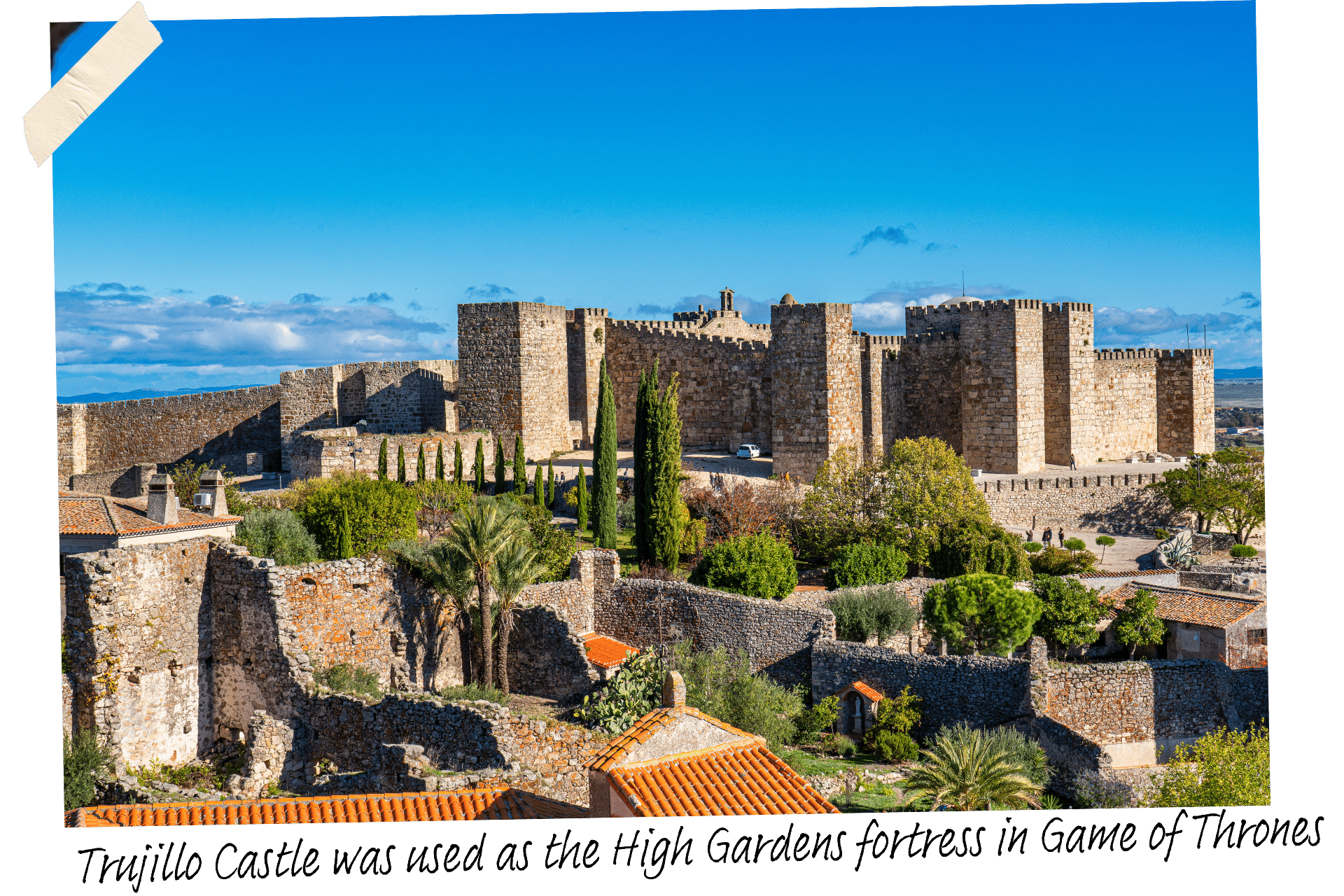
Not far from Cáceres , Trujillo is also known for its incredibly well-preserved medieval architecture (and for some of the best Roman ruins in Spain) – and for its connection to the Spanish Conquistadors. Look at the town’s skyline and straight away you’ll spot the impressive Trujillo Castle, a Moorish fortress dating back to the 9th century and with panoramic views of the surrounding landscape. It was actually used as the fortress of High Garden in Game of Thrones.
Trujillo’s Plaza Mayor, one of the most beautiful main squares in Spain, is surrounded by Renaissance mansions and churches, and has a statue plonked in it of Francisco Pizarro, the famous conquistador. Just maybe don’t mention the fact that it was digitally edited out of the square to be replaced by one of a dragon instead – as one of the House of the Dragon filming locations, Plaza Mayor, like Caceres, stood in for shots of King’s Landing.
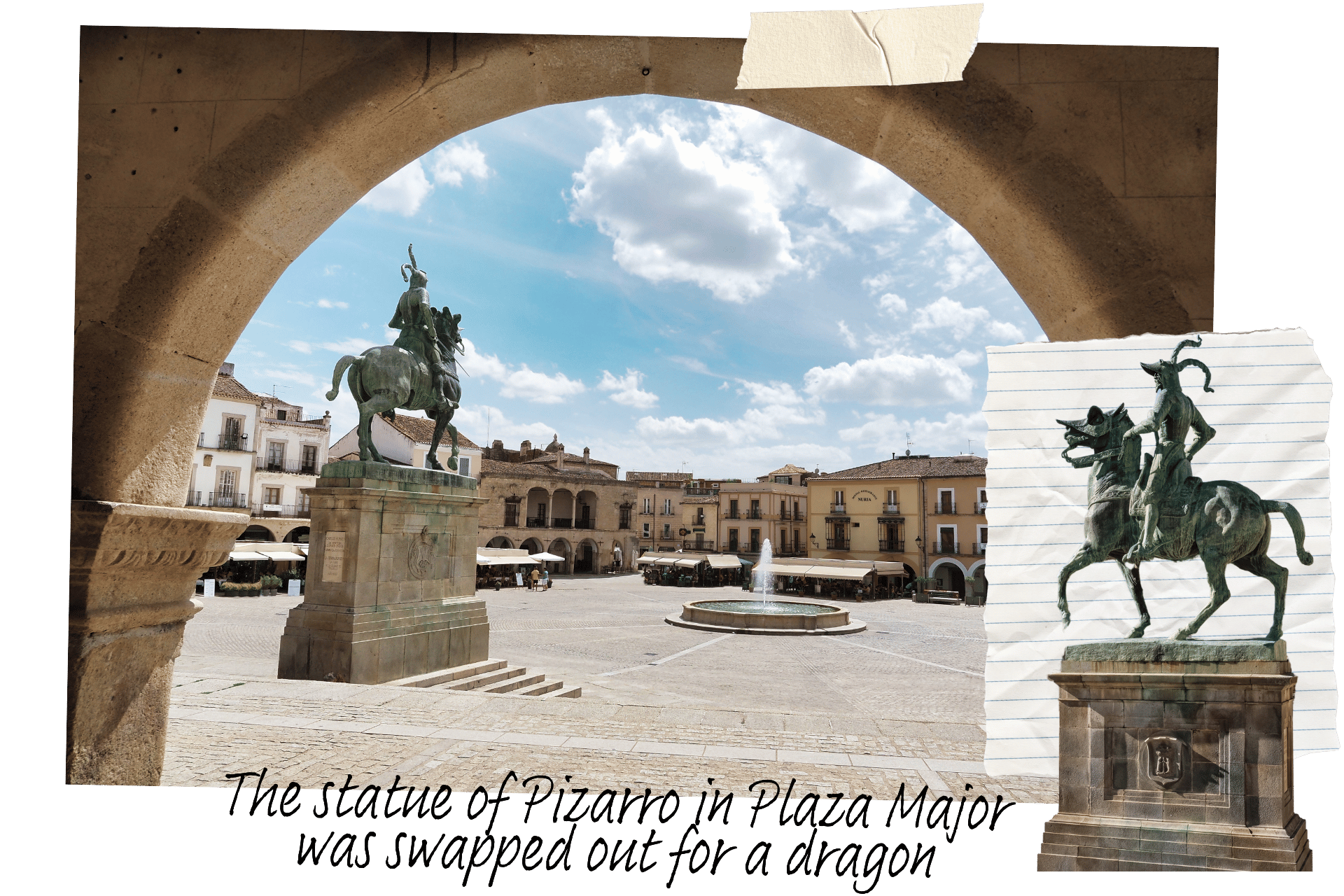
Outside of House of the Dragon, another couple of spots you may as well see while you’re in town is the Church of Santa María la Mayor, with its Gothic architecture and stunning altarpieces, and the Palace of the Marquises of the Conquest, with its elaborate Plateresque façade. Oh, and every year Trujillo hosts a National Cheese Festival, drawing food enthusiasts from all over to sample the best cheeses of Spain. Just sayin’.
Granada, Spain
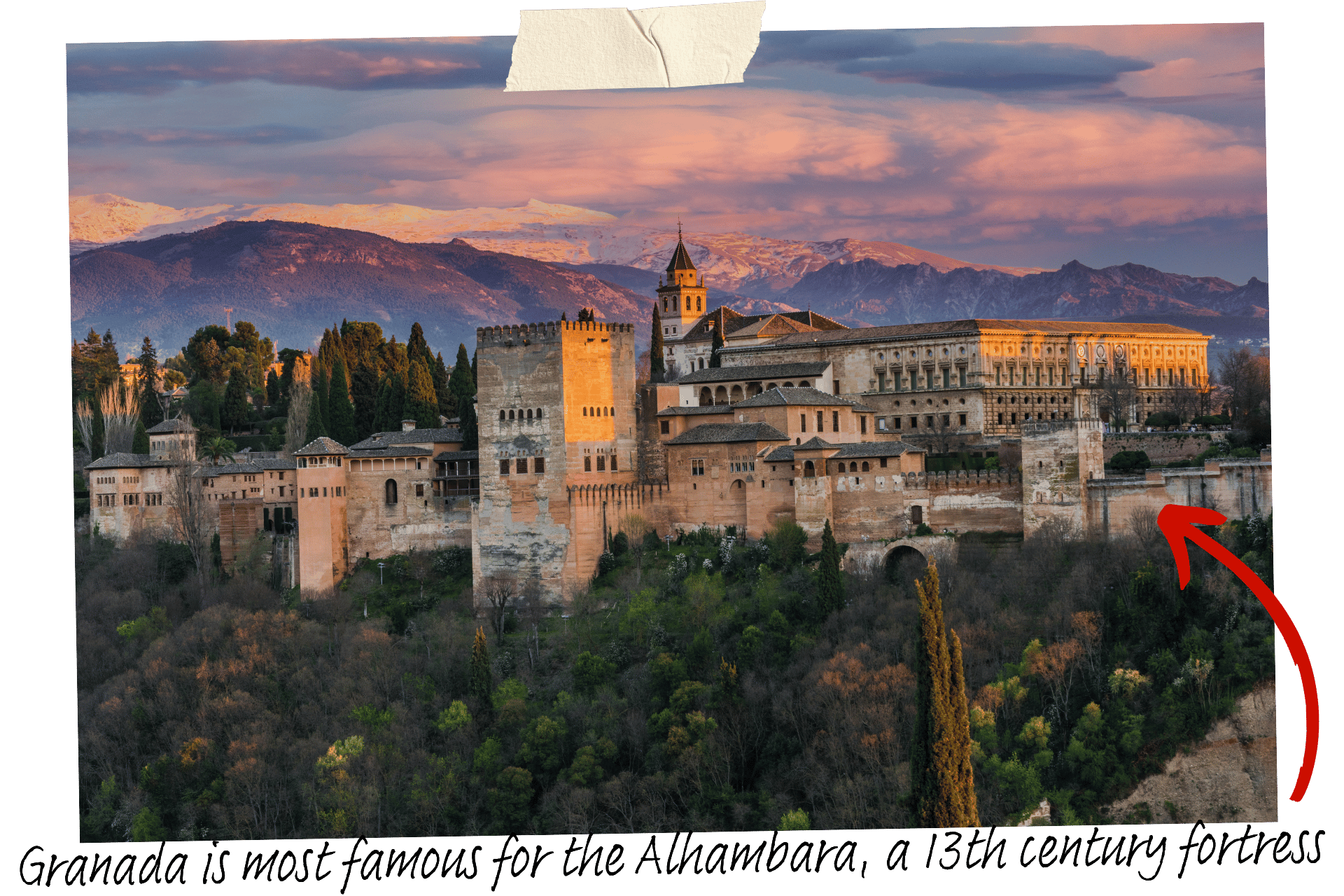
To the south of Spain, in the autonomous community of Andalusia, lies Granada. Famous for the Alhambra – a sprawling palace and fortress complex that dates back to the Nasrid Dynasty in the 13th century, Spain’s most visited attraction and a UNESCO World Heritage site to boot – Granada is also known for its Albaicín district: think narrow, winding streets and white-washed houses, offering a sneaky glimpse into the city’s Moorish past.
There’s a lively cultural scene here too – the city is a hub for flamenco, with many venues offering traditional performances, and the influence of the Gypsy community is particularly notable in the Sacromonte district, famous for its cave dwellings. There’s a strong student presence here too, as Granada is home to the historic University of Granada, one of the oldest and most prestigious universities in Spain.
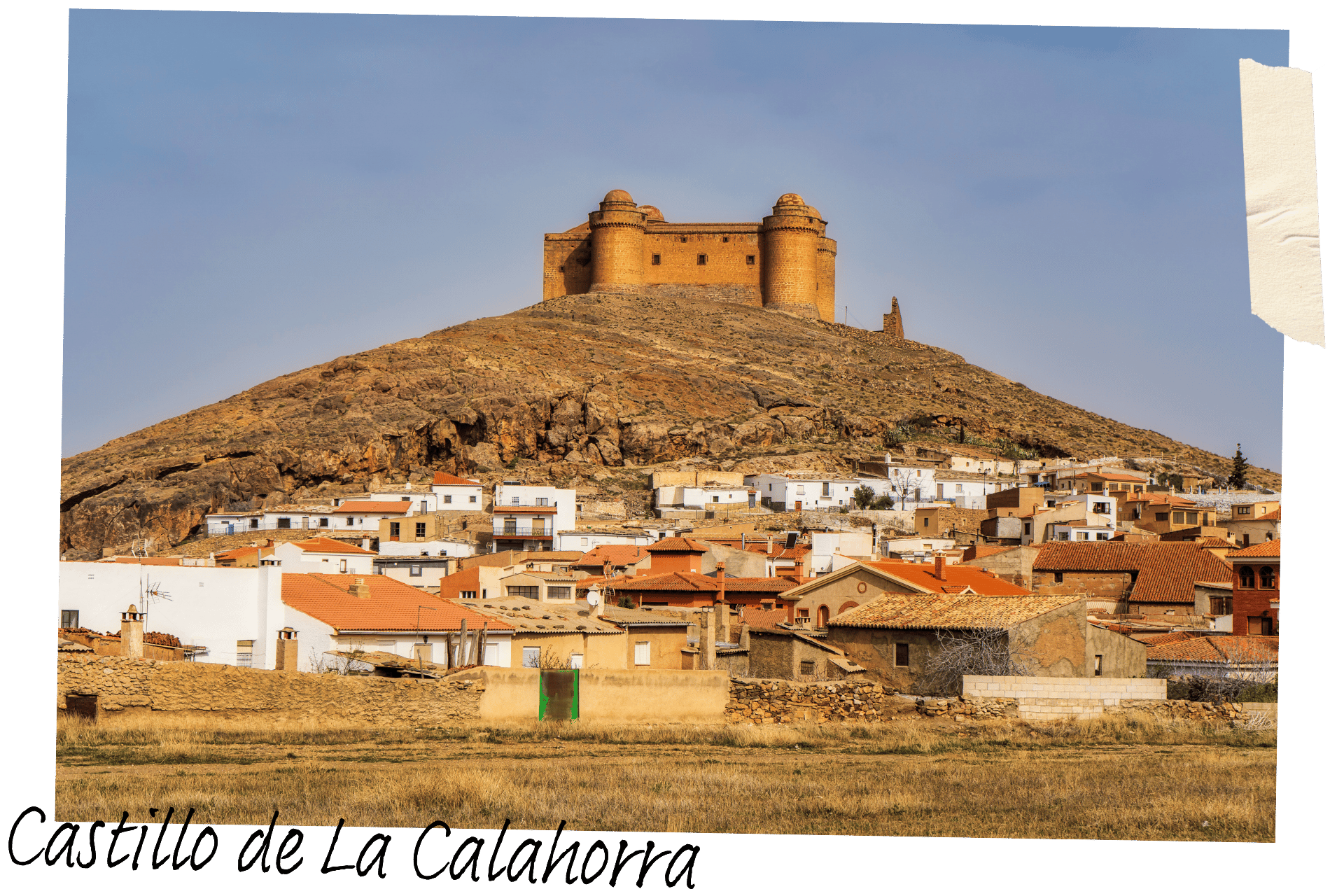 Alongside all of the above, Granada is also home to the tiny municipality of La Calahorra (just 673 residents, at last count), where in the nearby Sierra Nevada foothills you’ll find the Castillo de La Calahorra, one of the first Italian Renaissance castles to be built outside of Italy. Another one of the House of the Dragon filming locations, it was used as a manse in the city of Pentos. Unassuming from the outside, trust us when we say it’s fancy inside.
Alongside all of the above, Granada is also home to the tiny municipality of La Calahorra (just 673 residents, at last count), where in the nearby Sierra Nevada foothills you’ll find the Castillo de La Calahorra, one of the first Italian Renaissance castles to be built outside of Italy. Another one of the House of the Dragon filming locations, it was used as a manse in the city of Pentos. Unassuming from the outside, trust us when we say it’s fancy inside.
Cheap (dragon-free) flights to Spain
Monstanto, Portugal
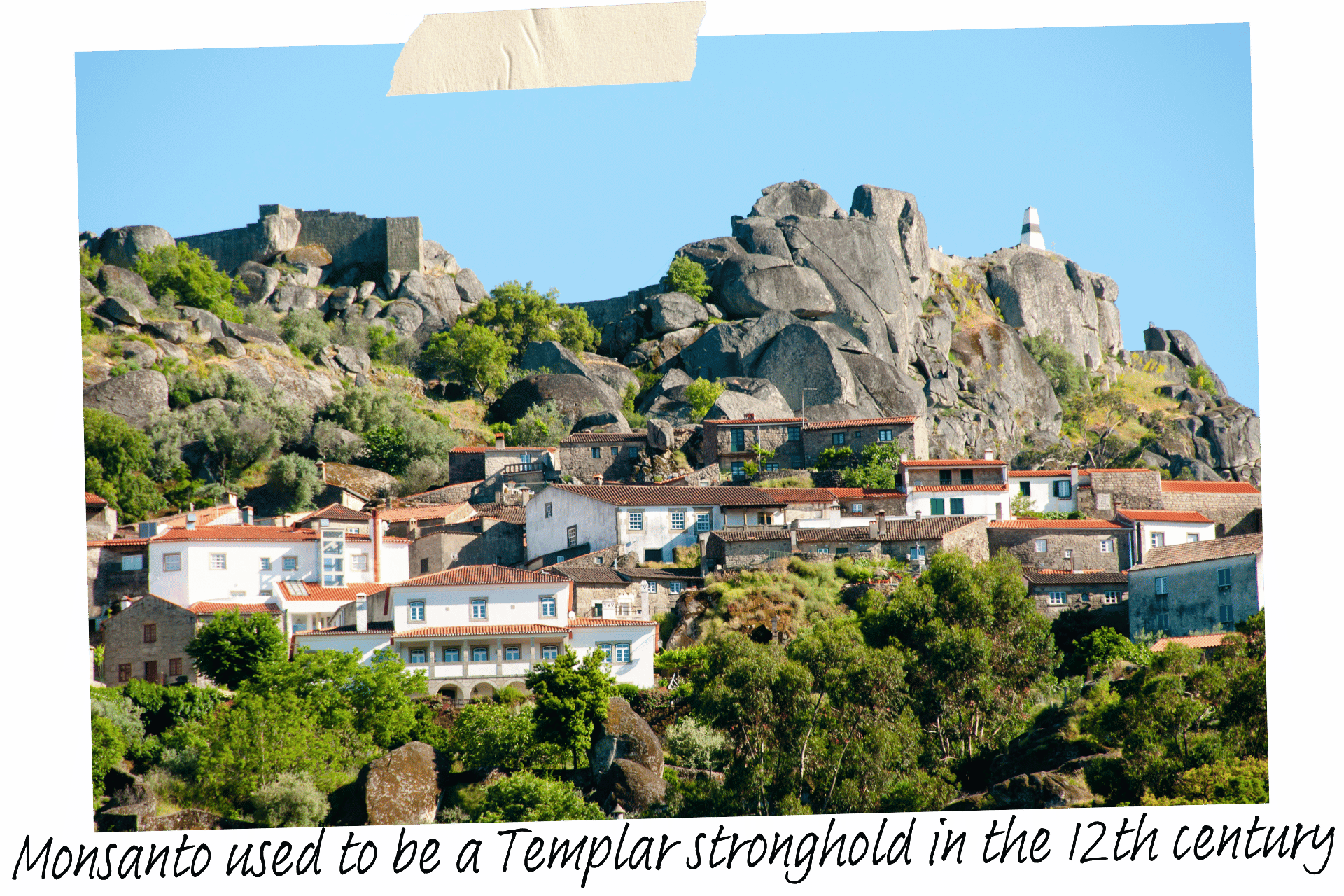
Perched on a granite hilltop, Monsanto, often referred to as “the most Portuguese village in Portugal,” might just be the most House of the Dragon filming location possible. Known for its unique blend of natural and architectural beauty, where massive – and we mean massive -boulders are integrated into the construction of houses, Monsanto’s narrow, winding streets are lined with traditional stone cottages, and its historical significance is reflected in its well-preserved medieval structures, including the ruins of a Templar castle dating back to the 12th century.
This incredible cultural heritage is celebrated through various traditions and festivals, the most famous being the Festa das Cruzes (Festival of the Crosses), which takes place annually in May. During this festival, residents decorate their homes with flowers and crosses, and traditional music and dances fill the village streets.
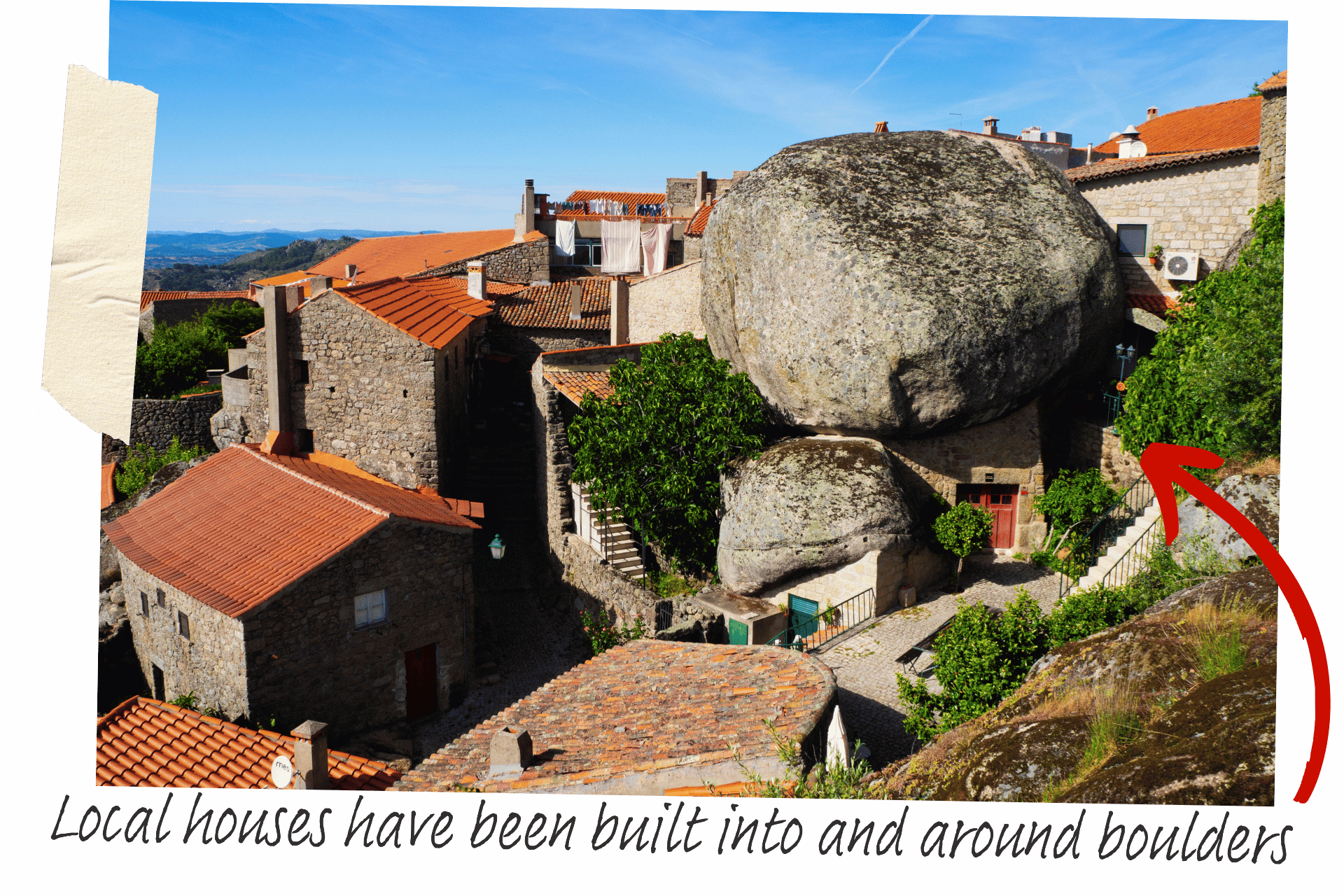 Monsanto’s location, close to the border with Spain and high up on the hilltop, means it’s always been a defensive stronghold, and this, along with the fact that it’s barely altered since the medieval era, meant it was perfect as the backdrop to Dragonstone. The Chapel of São Miguel, the Church of Santa Maria do Castelo, and the Castle of Monsanto were all used in various scenes for the series.
Monsanto’s location, close to the border with Spain and high up on the hilltop, means it’s always been a defensive stronghold, and this, along with the fact that it’s barely altered since the medieval era, meant it was perfect as the backdrop to Dragonstone. The Chapel of São Miguel, the Church of Santa Maria do Castelo, and the Castle of Monsanto were all used in various scenes for the series.
Cheap (dragon-free) flights to Portugal
Other House of the Dragon filming locations
Besides the sunny shores of Spain and Portugal, House of the Dragon was also filmed on the slightly less sunny shores of England and Wales too.
In Cornwall, the magical St Michael’s Mount (standing in for Driftmark, the ancestral seat of the House of Velaryon), as well as Holywell Beach and Kynance Cove were all used for multiple scenes, whilst up north in the Peak District, scenes were shot in Cave Dale in Castleton (where the crab king’s acolytes take shelter) and at Eldon Hill Quarry.
Back down south, Bourne Wood, a veteran in the filming industry, and located just outside the market town of Farnham in Surrey, was used (as it has many times before) for dramatic battle scenes, whilst to the left of the map, Gwynedd in Wales was used for Dragonstone exterior shots, thanks to its rugged quarries and valleys, whilst Anglesey, just 20 minutes down the road, was used for several battle scenes across its beautiful beaches, from Penmon and Beaumaris to Llanddwyn Beach and Porth y Cwch.

